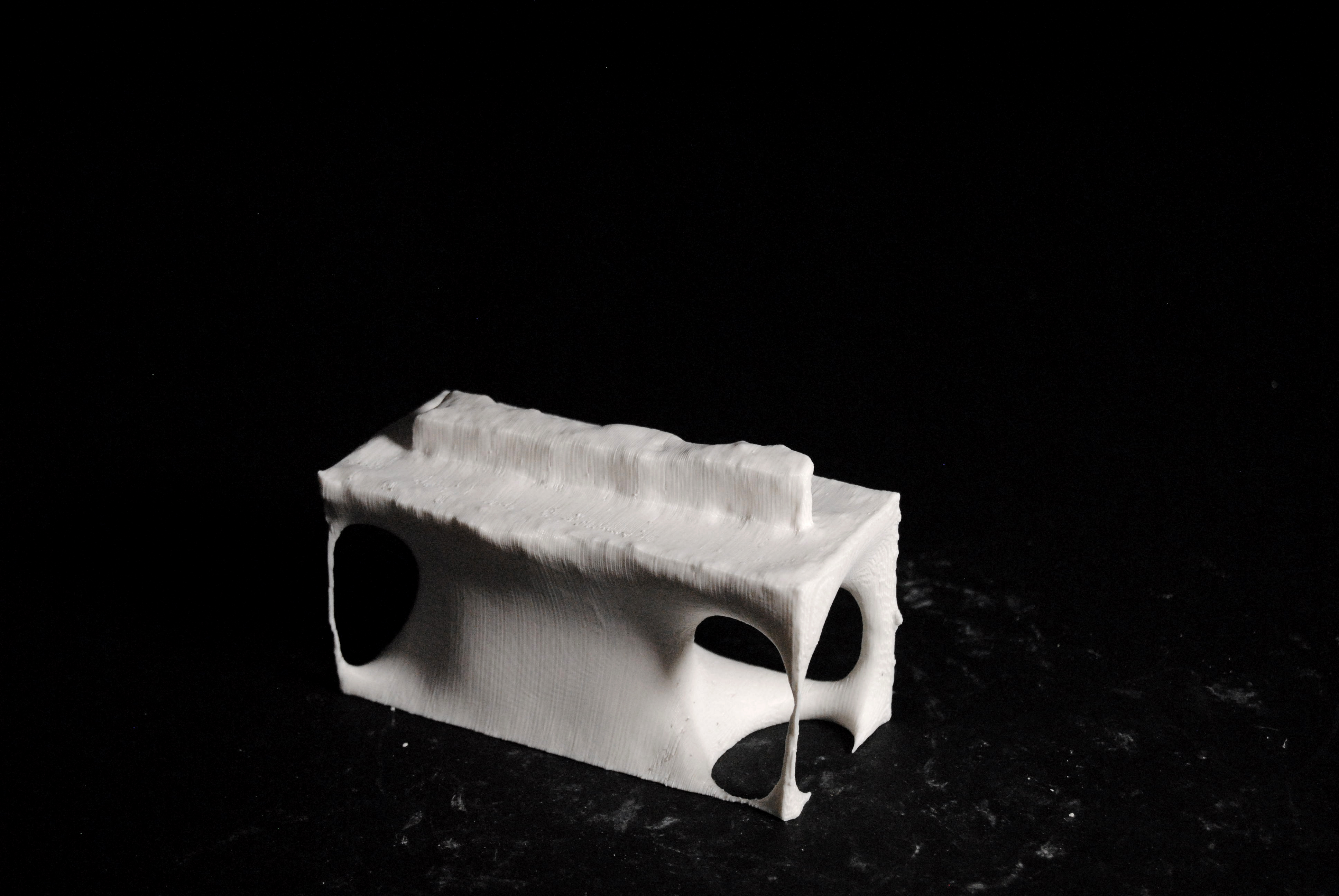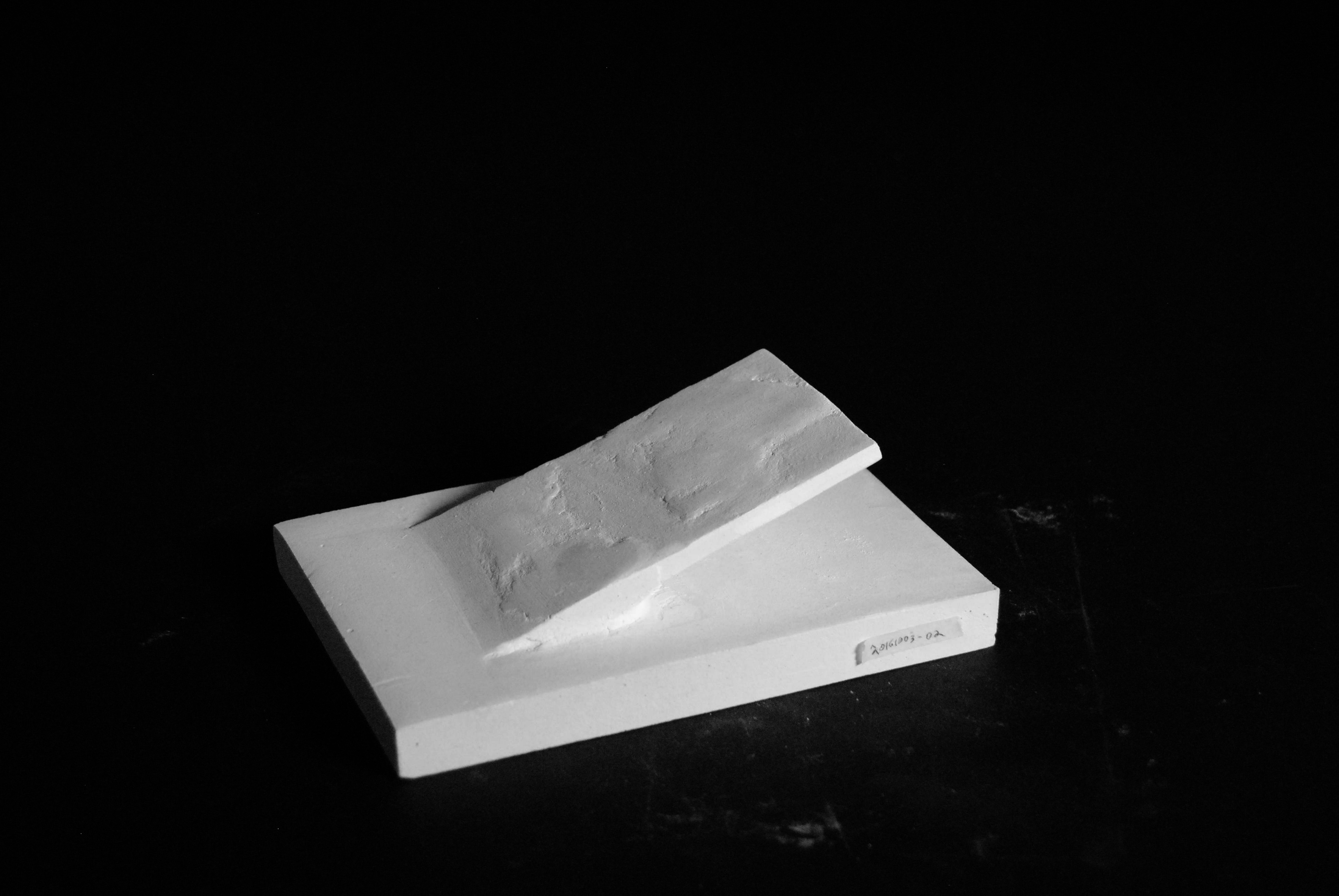NEW NOISE















presentation: front and rear projection on custom casework with scrim
![]()
![]() process: recursive fabrication loops
process: recursive fabrication loops
![]()
![]()
![]()
![]() actants: from a roof to an amphitheater
actants: from a roof to an amphitheater






 actants: 125 improvised spatial studies
actants: 125 improvised spatial studies
Using improvisation as a model for spatial production.
Improvisation requires the near-simultaneous conception and production of cultural material, and results in forms not given or determined at the outset but rather defined and produced throughout the process of making within a given framework. This approach proposes new ways of understanding disciplinary constructs like program, type, and site, situating each not as static sets of information but rather as procedures derived through the design process and acting back upon it.
New Noise comprises 125 spatial studies produced through casting, 3D scanning, 3D printing, CNC milling, photography, collage, and hand drawing, among other techniques. Studies were produced through recursive fabrication loops—for instance, produce a plaster cast, 3D scan it, 3D print the scan, create a mold from the print, produce another plaster cast. At any moment, a fabrication loop may spur a new production process (photography, instead of 3D scanning; CNC milling rather than 3D printing) inciting a new loop. Each new object repeats some information from the previous object, using it as the basis for a shift in material, formation process, and, ultimately, a novel spatial study. The total production is thus genealogically linked, comprising 125 improvisationally derived nodes in the manifold of virtual objects bounded by the production process.
Understanding the built environment as a set of objects, statically defined by their visual and other extensive characteristics, belies the complex manifold of actors, forces, and relationships that continually shape built space.
Holding the architectural design process above or outside these convoluted machinations, either by selectively diagramming known quantities to motivate and justify a particular design solution or by enacting a totally autonomous spatial or visual agenda, has and will continue to produce built space that cannot account for or respond to the full range of forces to which it is subject.
Rather, we must cultivate a spatial practice that recognizes design as a series of decisions shaped by a myriad of constantly shifting influences, failures, intentions, reactions—not unlike the built environment itself.
Master’s thesis advised by Robert Gerard Pietrusko
Harvard Graduate School of Design, January 2017
Pending publication in Thresholds 47: Repeat (spring 2019)
Editors: Walker Downey and Sarah Rifky
Designer: Goda Budvytyte